Art has been around for centuries and has always had the power to truly move people in more ways than one. Different art forms have the ability to make us feel happy, excited, and liberated, but also melancholic, perplexed, and confused. People use it to express their inner thoughts and feelings and it is something that is appreciated by many.
Painting is an especially powerful form of expression and it is truly beautiful in the way that one piece can hold many different meanings to numerous individuals. It can evoke different emotions even when people are looking at the same artwork.
If you are thinking about venturing into art or simply want to take up painting as a hobby, you are probably aware that you will need to get a lot of supplies to start your work. Now, if you are just getting started there is a high chance that you have not found your favorite or distinct style yet, as well as the tools you like using the most.
So if you are wondering exactly what supplies are necessary and which ones should you get, here is a list of all the basic tools a painter should have.
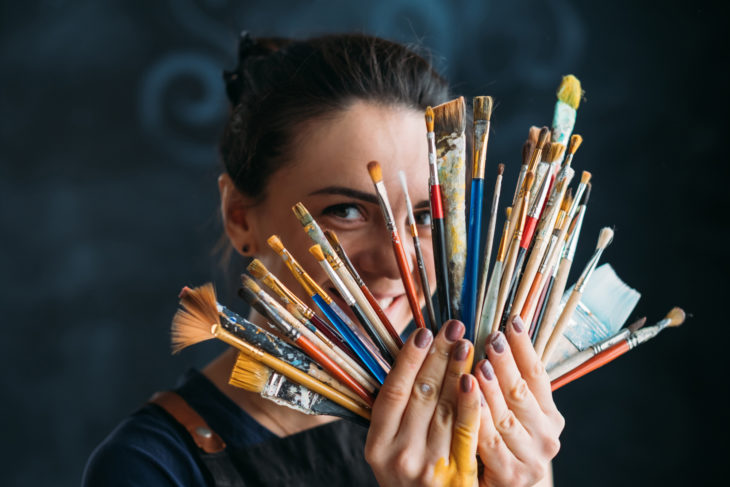
Source: segodnya
Contents
The Essentials
1. Pencils
Pencils are one of the most important tools and even though drawing with them might seem easy, there are a lot of different types to choose from. The two main types are charcoal and lead pencils, with the latter also varying in hardnesses and colors. Standard graphite ones are typically labeled from 2H to 6B which determine the hardness (H) or softness (B) of the lead. Charcoal pencils provide richer and deeper blacks, making them perfect for quick sketches.
2. Pens
Pens come in a variety of tip sizes with each one having a different use and purpose. If you prefer drawing with pens, have a varied selection of your favorite brand. They usually come in sets, but you can also buy them separately, so make sure to determine the sizes and types you will need.
3. Erasers
For rubbing out your mistakes, a white eraser will serve you just fine. However, consider getting a kneaded eraser too since it is pliable, soft, and can be shaped in many different ways. This will enable you to remove even the smallest of details or create subtle shading.
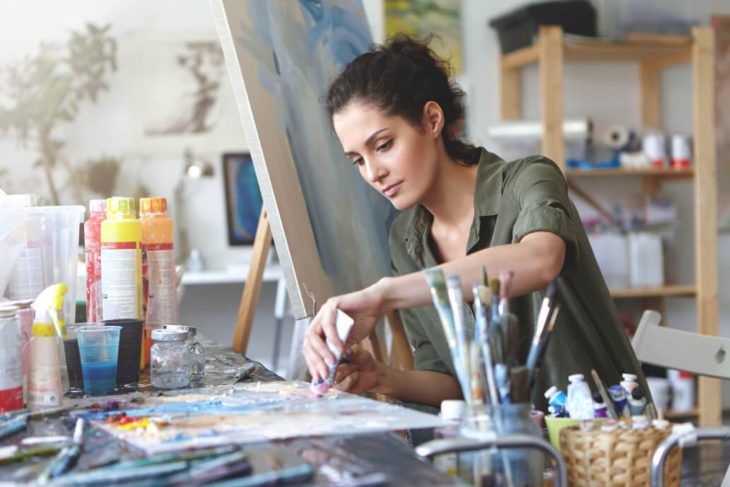
Source: b.bear
For Drawing and Painting
1. Sketchbooks
Sketchbooks are not only great for drawing but for keeping your artworks organized and in one place. What type of sketchbook you buy is completely up to, just keep in mind that it does not have to be an expensive one for you to draw like a pro.
2. Canvases
There is a wide range of canvas sizes to choose from and you can even order ones made by your specific measurements. You never know when inspiration might strike, so always keep a few on hand. If you are interested in learning more, you can click here.
3. Paper Pads
Paper pads are perfect for both drawing and painting. There are ones available for acrylics, watercolors, colored pencils, charcoals, and more, so pick depending on the paints you are planning to use.
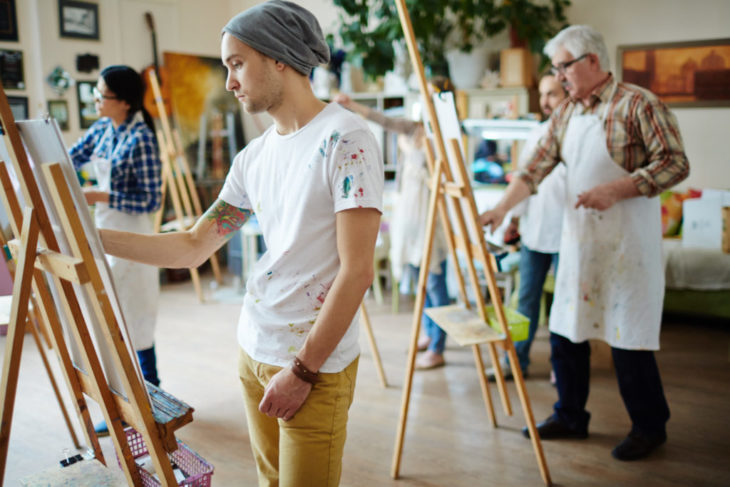
Source: PartnerTap
Paints
1. Acrylics
The biggest benefit of using acrylics is that they can be painted on almost anything. They are extremely versatile and vibrant, yet affordable, so you can have a lot of fun using them. Keep in mind, that you do not need a hundred different colors, especially if you are a beginner. Blue, yellow, red, white, and brown should be enough because they are all you need to create many different hues and shades by mixing them.
3. Oils
Oil paints are also versatile and you can control the drying time and paint consistency using additional oil or thinners. They are also economical and favored by many art collectors.
3. Watercolors
Mastering the control of watercolors requires some time, but once you achieve this, you will be able to play around with mesmerizing techniques and beautiful gradations.
4. Colored Pencils
Colored pencils for drawing are usually more pigmented and softer as compared with ones found in a classroom. They come in sets and different amounts, so all you have to do is find a brand that best suits you.
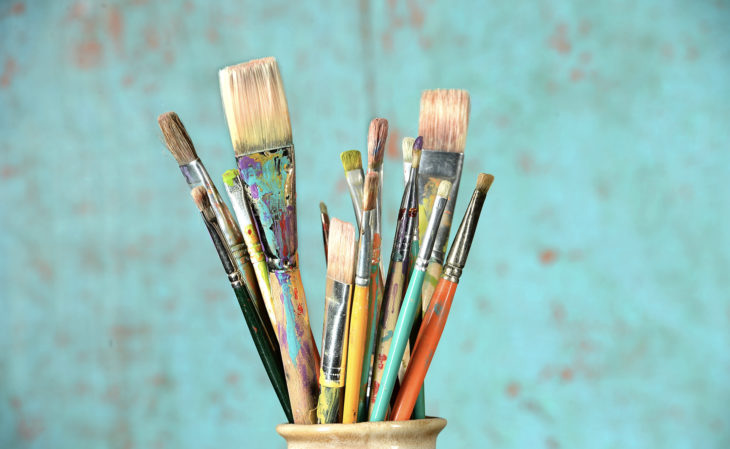
Source: ABC de Sevilla
Tools
1. Brushes
The brushes you will use depends on the paints you are using, the effects you are creating, the size of your artwork, and more. You will need to buy brushes for each medium you are working with because you cannot use, for example, use watercolor brushes for acrylic paints and vice versa.
2. A Palette
For mixing colors to create new shades and hues you will need a palette. Make sure to test how it feels in your hand before buying it since it needs to be comfortable while you are holding it.
3. An Easel
You need at least one to be able to easily and comfortably paint on your canvases. They vary in size, so go for one that fits your budget but also your living space.
4. A Mahl Stick
A small stick is a thin pole that has a pad in the shape of a ball on one end. It is used for two purposes which include to keep your hand steady and provide support so your hand can rest. It is especially useful when details are painted since hand steadiness is crucial. You can purchase the pole or make one yourself.
5. Masonite Board
Masonite boards can be used as a painting surface, for stretching out watercolor paper, or as a drawing board. When used as a surface to paint on, it first needs to be sanded lightly and primed too.
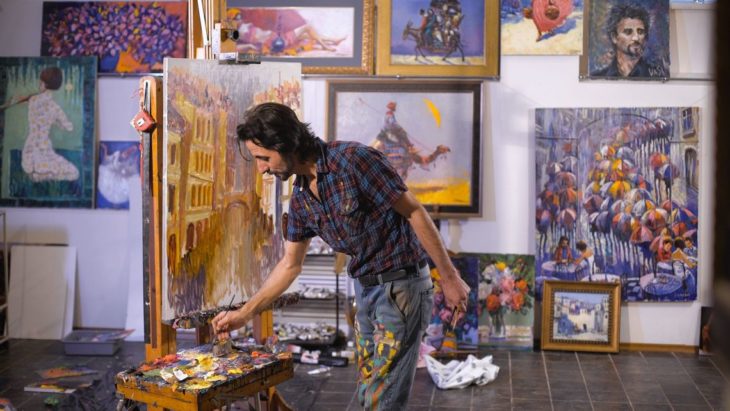
Source: Infrarotheizungen
For Protection
1. Varnishes
Varnishes are used for preserving oil paintings and can have a matte or gloss finish. You can buy them in any art supply store or order them online.
Conclusion
Know that it is completely okay not to buy all these tools and supplies at once. Take your time to learn different techniques and experiment with different paint types. You can also continue exploring different forms or simply stop when you have found your style and favorite paints to work with. No matter what you decide to go for, just remember to have a lot of fun and express yourself in the way you see most fitting.
